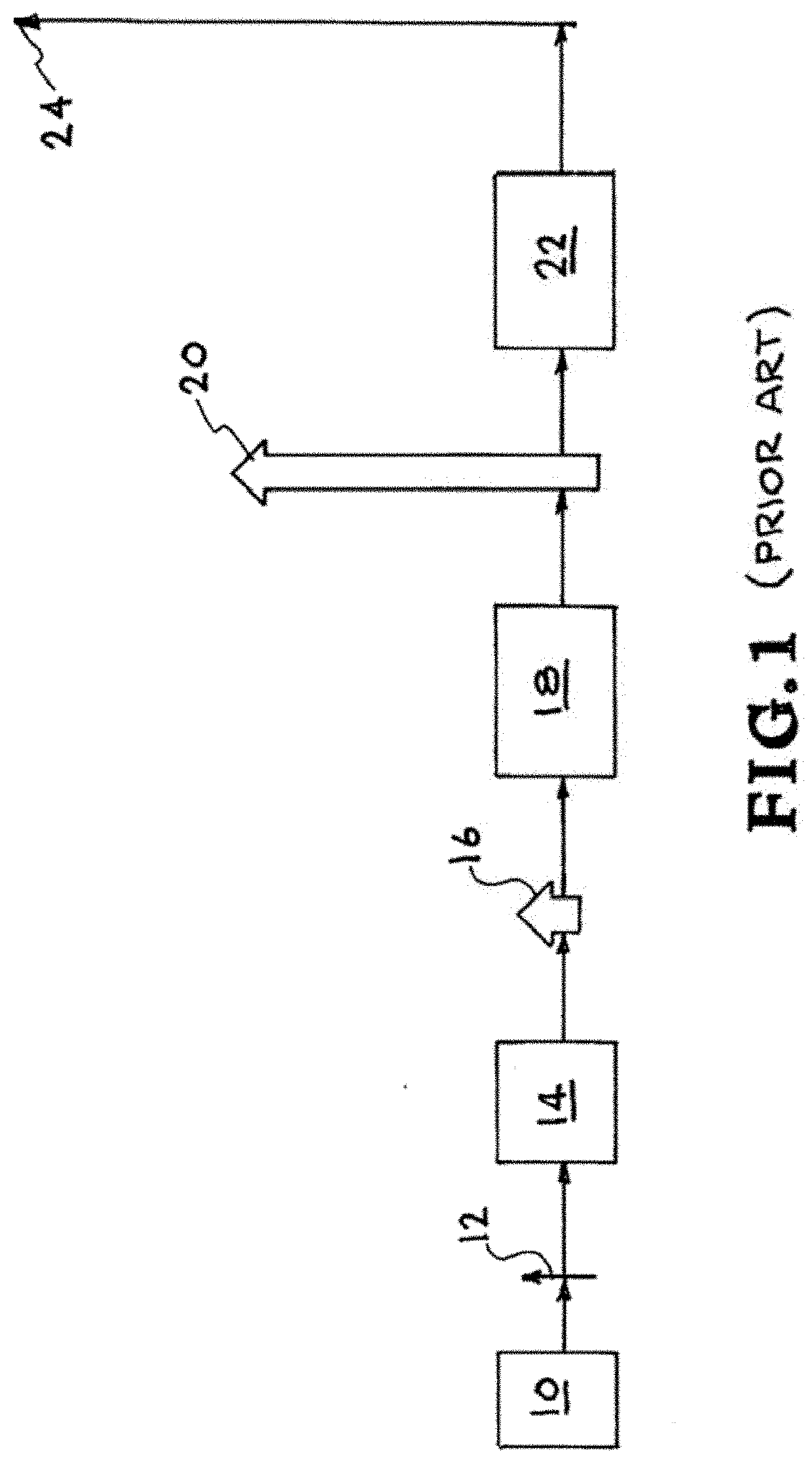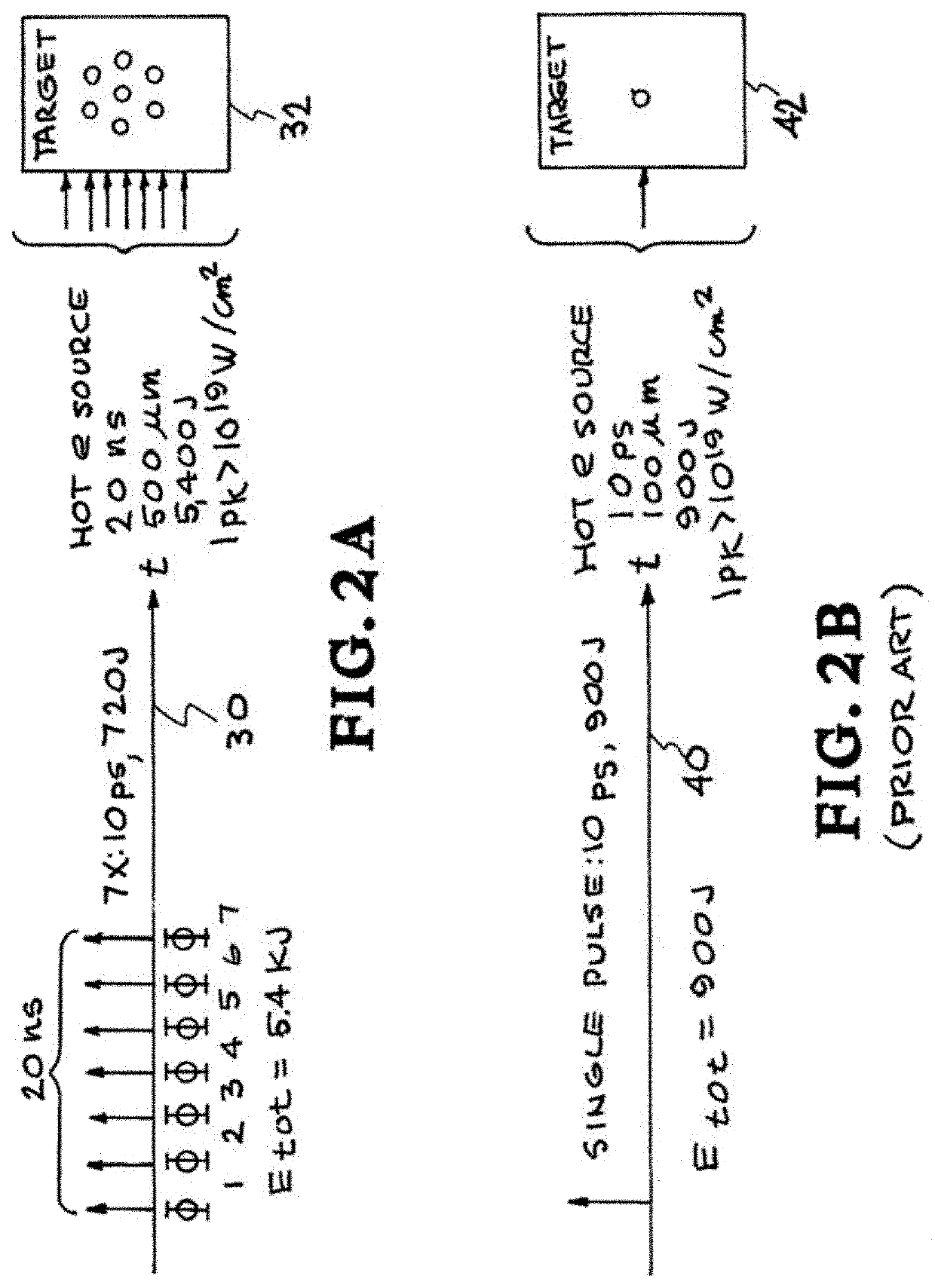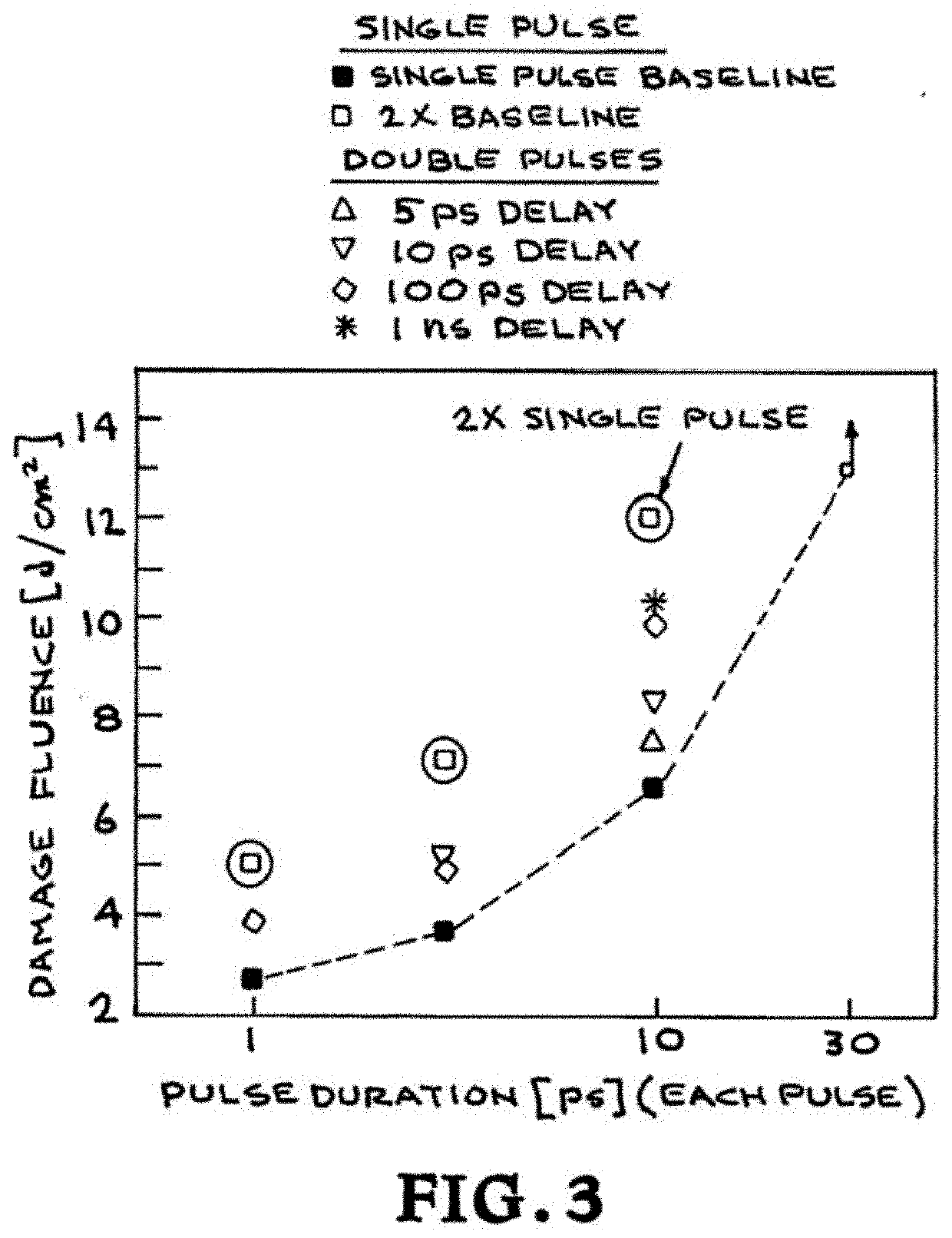Burst-mode chirped pulse amplification method
- Summary
- Abstract
- Description
- Claims
- Application Information
AI Technical Summary
Benefits of technology
Problems solved by technology
Method used
Image
Examples
example 1
[0029 of FIG. 7A in general is a block diagram showing a single seed pulse, a burst generator, a stretcher, an amplifier (pre and final) and a compressor. All systems of examples 1-4 (FIGS. 7A-7D) are followed by focusing optics for directing the pulses onto the target (not shown) such as target 60 of FIGS. 4A and 4B. In this configuration, a laser front end 100 produces a low energy short pulse “seed”112. Seed pulse 112 passes through burst generator 80 to produce a series of short pulses which are stretched in time by stretcher 114 to produce a series of stretched pulses 116. Amplifier 118, which may include a preamplifier 118′ and a final amplifier 118″, amplifies the series of stretched pulses 116 to produce a series of stretched pulses 120. Compressor 122 compresses series of amplified pulses 120 in time to produce a series of compressed pulses 124.
example 2
[0030 of FIG. 7B in general is a block diagram showing a single seed pulse, a stretcher, a burst generator, an amplifier (pre and final) and a compressor. In this configuration, a laser front end 100 produces a low energy short pulse “seed”112. Seed 112 passes through pulse stretcher 114 to produce a stretched pulse 116 which then passes through burst generator 80 to produce a series of stretched pulses which are then directed through amplifier 118. Amplifier 118, which may include a preamplifier 118′ and a final amplifier 118″, amplifies pulses 116 to produce a series of amplified pulses 120. Compressor 122 compresses the pulses in time. Thus, the output pulses from compressor 122 are a series of compressed pulses 124.
example 3
[0031 of FIG. 7C in general is a block diagram showing a single seed pulse, a stretcher, a pre-amplifier, a burst generator, a final amplifier and a compressor. In this configuration, a laser front end 100 produces a low energy short pulse “seed”112. Seed 112 passes through pulse stretcher 114 to produce a stretched pulse 116 which, as shown in the insert, then passes through preamplifier 118′ and then burst generator 80 followed by final amplifier 118′ which amplifies the series of pre-amplified pulses 116 to produce a high energy stretched series of pulses 120 that are directed into compressor 122 which compresses the series of amplified pulses to produce a series of high energy output pulses 124.
PUM
 Login to View More
Login to View More Abstract
Description
Claims
Application Information
 Login to View More
Login to View More - R&D
- Intellectual Property
- Life Sciences
- Materials
- Tech Scout
- Unparalleled Data Quality
- Higher Quality Content
- 60% Fewer Hallucinations
Browse by: Latest US Patents, China's latest patents, Technical Efficacy Thesaurus, Application Domain, Technology Topic, Popular Technical Reports.
© 2025 PatSnap. All rights reserved.Legal|Privacy policy|Modern Slavery Act Transparency Statement|Sitemap|About US| Contact US: help@patsnap.com



